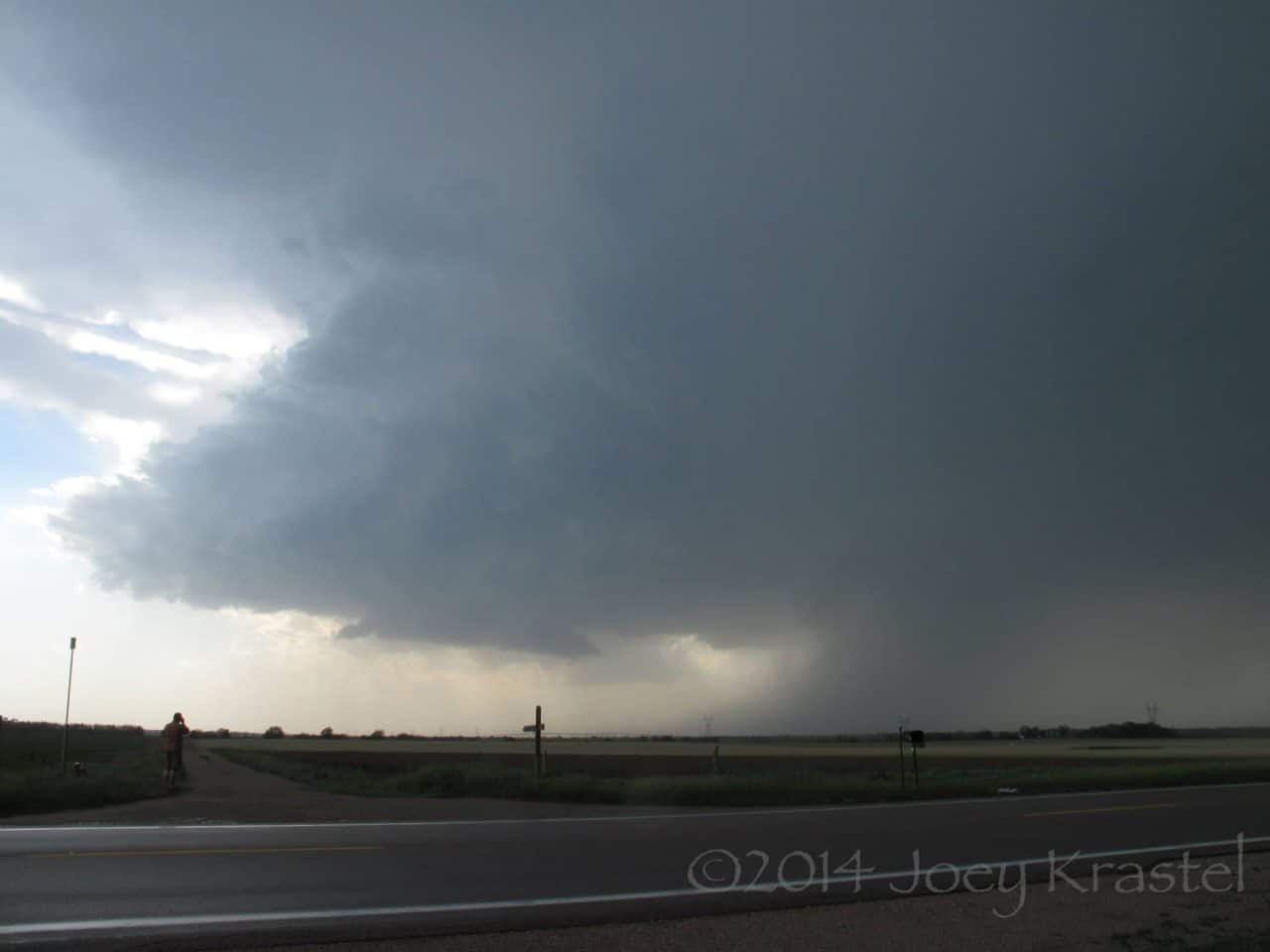The purpose of this page is to provide a brief description of each climate and help you to understand how that affects gas and electric bills in these regions.
Contents
- Climatic Stereotypes and Perception of Weather Patterns
- The Effect of Climate on Heating and Cooling Bills, and on Electricity Generation
- Climate Types
- Article Glossary
Climate of:
Climatic Stereotypes and Perception of Weather Patterns
People will often think that a climate receives an unusual amount of rain, for example, because it rains frequently there, but just because it rains frequently does not mean that it does because the rain could be light.
It could rain every day and lightly but still receive a lower total amount of rain annual than other areas which are not as “rainy” as some would put it, as the first area mentioned.
A real example is Seattle. Seattle is notorious for being rainy, but the average annual precipitation there is only 980 mm (38.6 inches) per year (Source), while certain areas in New York such as the western Adironacks, Tug Hill area, and the Catskills receive an average of 1270 mm (50 inches) per year.
Weather, Heating, Cooling, and Electricity Generation Based on Geographical Location
Climate varies with geographical location. Some countries are hot and arid, temperate, cold and wet, a mixture of the above, etc. This affects space heating and cooling needs of people significantly. In some countries, such as some parts of Sweden, summers are extremely hot and the winters are extremely cold.
The consequence of this is that during the winter, the cost of heating is extremely high, and during the summer, the cost of cooling is extremely high, and sadly, that is the case throughout the year. The low average cost of electricity in the United States ($0.08 to $0.10 USD/kWh) compensates for this. The cost of heating increases as the environment temperature decreases.
Climate Types
Megathermal/Tropical climates are those with consistently high temperatures and the minimum average temperature is 18 °C (64 °F or 291 Kelvin) for all 12 months of the year. An example of a tropical country is Jamaica.
A temperate or mesothermal climate is one which is not extreme because they have an average temperature above 10 °C (50 °F or 283 Kelvin) in their warmest months and an average between -3 °C (26 °F or 270 Kelvin) and 18 °C during the coldest months. I will use the word temperate from after this section.
An extreme climate is one with extreme temperature variations. Some places (even states) intersect multiple climate zones which cause highly variable weather.
For example: El Paso, Texas which is in the western region of the state receives an annual average as little as 8 inches (200 mm) of rainfall while Houston which is in the eastern region receives as much as 54 inches (1400 mm) on average.
1 millimeter = 0.0393700787 inches.
1 inch = 25.4 millimeters.
Please note that when choosing solar panels or comparing the average amount of solar radiation of two different geographical locations you should know the number of hours per sunshine year. In many cases a Google search will retrieve that information for you.
Also remember that you really should be careful not to estimate the amount of solar panels you need too conservatively (this is very common) because you will end up spending far too much on them. This is especially important if you are going to directly power your house with them. Accuracy is crucial.
Africa
Africa is an enormous continent, and the result of that is the climate varies depending on where you are in Africa. South Africa, for instance, has a semiarid climate, meaning that it is dry. It is warm and winter temperatures seldom fall below 0° C, but summer temperatures frequently exceed 35° C (95° F or 308 Kelvin).
Therefore the amount of energy required for heating is low. Average annual rainfall is 500mm, which is considerably (360mm) less than the world average. More than 50% of Africa’s climate has inadequate precipitation, and less than 8% of its climate is tropical and has 10-12 months of rainfall. Source 1. Source 2.
Another source was the CIA World Factbook.
Australia
Australia is a large country in the southern hemisphere of the Earth. Due to its size, the weather varies significantly with region.
Seasons of Australia
The seasons of Australia are the opposite of those in the northern hemisphere.
- Autumn: March to May.
- Winter: June to August.
- Spring: September to November.
- Summer: December to February.
Rainfall: Inland (especially the centre of the country, known as Central Australia), the climate is arid (very dry).
In the tropical regions, such as Northwest Australia, Queensland, Northwestern Victoria, and New South Wales, and central and northern parts of the northern territory, there is a dry season which lasts from May to October.
The average temperature is in the 20 °C range, and the skies are usually clearer during this season.
During the wet season, which ranges from December to March, rainfall is significant due to a large amount of water vapour. While counter-intuitive, wet season is actually hotter than dry season.
There is also a “build up” period between the wet and dry seasons in which humidity is high.
Temperature: In Southern Australia, winters are cool, while in Northern Australia, they are warm. In the arid region mentioned (Central Australia), during summer, temperatures average 40 degrees C.
The South Eastern coast is temperate (meaning the weather is not extreme).
Hurricanes and Tropical Storms: These usually occur between November and April.
Hours of Sunshine Per Day In Australia
It is less than five hours in the following regions:
- Albany.
- Melbourne.
- Strahan.
- Warrnambool.
It is an average of seven hours in the following regions:
- Adelaide.
- Agusta.
- Port Lincoln.
- Dubbo.
- Canberra.
- Horsham.
- Sydney.
- Coffs Habour.
- Orbost.
- Kalgoodie Boulder.
- Kowanyama.
- Kairns.
- Weipa.
It is an average of ten hours in the following regions:
- Alice Springs.
- Birdsville.
- Giles.
- Halls Creek.
- Katherine.
- Mount Isa.
- Newman.
- Oodnadatta.
- Tennant Creek.
- Telfer.
It is an average of 11 hours in the following regions:
- Port Hedland.
Source: Australian Bureau of Meteorology
Main source, and further reading: Australian Government.
Britain
In Britain, the climate is temperate and cloudy, so this means that the weather is usually cloudy, and winters are not particularly cold. Therefore, heating costs are not too high, and cooling costs are very low because summers are not hot.
The average cost of electricity is low in the United Kingdom, at £0.07 pounds/kWh, so this also helps British residents to save money if they are using electric heaters, and air conditioners are normally electric. According to the CIA world factbook, more than half of the days are cloudy. The fact that more than half of the days are cloudy would normally mean that solar power would cost more.
Bear in mind that soft costs play a major role in the cost of solar power as well.
Rainfall: Average annual rainfall exceeds 1120 mm (44 inches), which is considerably higher (260mm or 10.2 inches higher) than the world average of 860mm. There is an average of 154.4 days of rainfall (greater than 1 mm) per year.
Winter: The average winter temperature is 3.7° C (38° F or 277 Kelvin).
Average Annual Hours of Sunshine:: 1354.9.
Department of Energy and Climate Change: Database of Wind Speeds
Iceland
In Iceland, the climate is temperate. Winters are windy and mild, and summers are damp and cool, according to the CIA world factbook. This means that Icelandic people do not need air conditioning, which is a huge contributor to electric bills, so the cost of cooling is very low, as well as the cost of heating, unless electricity and fuel prices are very high. Icelandic weather is also very intermittent. Source.
Jamaica
Jamaica’s climate is megathermal/tropical, therefore, the lowest average temperature throughout the entire year is 18° C. This obviously means that there are no heating costs, but cooling costs are high throughout most of the year due to the extremely high cost of electricity which is the equivalent of $37 JMD per kWh, or $0.43 USD/kWh if the exchange rate is $1 USD = $86.10 JMD.
At such an electricity rate, the cost to operate a 1,000 watt air conditioner (at the setting at which the power draw is 1,000 watts of course) is $37 JMD per hour. That may not sound like much to you, but it adds up. If left on for 8 hours per day, the cost would add up to $296 per day, and then $2072 per 7 day week, and finally: $8,288 per month.
To determine how much a 500 watt 5,000 BTU air conditioner would cost in a case like the one above, you would divide the result by two, so $8,299 / 2 = $4,144 per month. the amount of cooling capacity required in Jamaica is not particularly high though. During the winter months, the temperature in Jamaica is comfortable enough so air conditioning is not necessary for homes. At some times, not even a fan is necessary.
Average Hours of Sunshine
Average Monthly and Annual Sunshine in Hours (during the 46 year period of 1963 to 2009):
Format: [Month]: [Monthly Sunshine in Hours].
- January: 346.4.
- February: 334.8.
- March: 373.4.
- April: 376.2.
- May: 402.3.
- June: 395.4.
- July: 405.8.
- August: 394.6.
- September: 367.5
- October: 364.1.
- November: 339.2.
- December: 344.1.
Average Annual Hours of Sunshine: 4,443.8.
Source: Meteorological Service of Jamaica (I contacted them via e-mail personally).
Average Rainfall
Average Monthly and Annual Precipitation (during the 46 year period of 1963 to 2009):
Format: [Month]: [Monthly Rainfall in Millimetres].
- January: 105
- February: 85
- March: 88.91
- April: 130.2
- May: 235.2
- June: 156.07
- July: 129.8
- August: 175.61
- September: 213.57
- October: 250.33
- November: 187.61
- December: 126.72
Average Annual Rainfall: 1,884 mm.
Source: Meteorological Service of Jamaica.
Norway
Norway, which shares the same latitude as Alaska, Siberia, and Greenland, is a country in which the climate along the coast is temperate, but the climate further inland is colder and more rainy. The Norwegian climate is not the same as that of the three countries it shares the same latitude with.
Summers are cold, and the west coast is usually cool and it rains year round. This means that the amount of energy required for space heating in coastal Norwegian regions is less than that of regions further inland. The highest temperature recorded during the winter is 18.9 °C in February in Sunndalsøra. Source.
Saudi Arabia
Saudi Arabia has mostly clear cloudless skies and the environment is usually dry (except along the coast since humidity is high there) and hot during the summer.
Sweden
In Sweden, the southern climate is temperate and has cold cloudy winters, as well as cool, but partly cloudy summers. The northern climate is subarctic, meaning that winters are very cold and temperature variations are very extreme. This means that it is more energy intensive to heat homes in the northern region than in the southern ones. Source.
Article Glossary
Arid: Dry/Lacking sufficient precipitation.
Autumn (Meteorological): This is one of the temperate seasons which begins on September 1 and ends on the 30th of November. It is the transition period from summer to winter.





